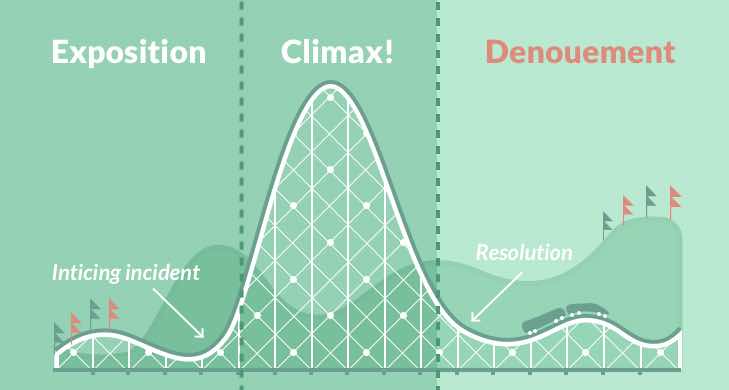TZTEVAN TODOROV
Traditionally, narrative structures followed a formula which was identified by the theorist Tzvetan Todorov.
Todorov studied classic fairy tales and stories.
He discovered that narratives moved forward in a chronological order with one action following after another. In other words, they have a clear beginning, middle and end.
Todorov also suggested that the characters in the narrative would be changed in some way through the course of the story and that this would be evident by the resolution.
This traditional story arc format is known as a linear narrative:
| Steps | What happens |
|---|---|
| 1 | The narrative starts with an equilibrium |
| 2 | An action or character disrupts the equilibrium |
| 3 | A quest to restore the equilibrium begins |
| 4 | The narrative continues to a climax |
| 5 | Resolution occurs and equilibrium is restored |
FREYTAGS PYRAMID

Novelist Gustav Freytag developed this narrative pyramid in the 19th century, as a description of a structure fiction writers had used for millennia. It’s quite famous, so you may have heard it mentioned in an old English class, or maybe more recently in one of our online fiction writing courses.
Freytag’s Pyramid describes the five key stages of a story, offering a conceptual framework for writing a story from start to finish. These stages are:
- Exposition
- Rising Action
- Climax
- Falling Action
- Resolution
Here is the five-part structure of Freytag’s Pyramid in diagram form. Freytag’s Pyramid, it starts with the exposition. This part of the story primarily introduces the major fictional elements – the setting, characters, style, etc. In the exposition, the writer’s sole focus is on building the world in which the story’s conflict happens.
